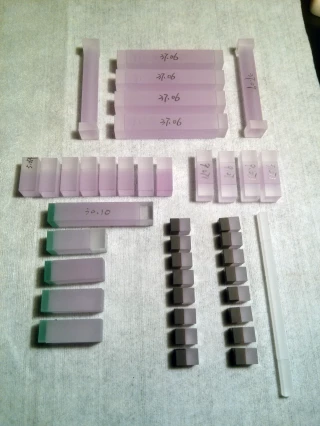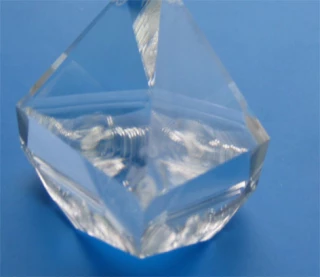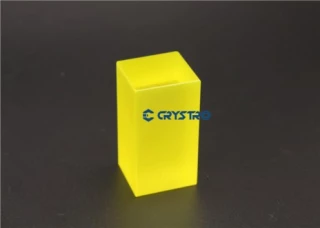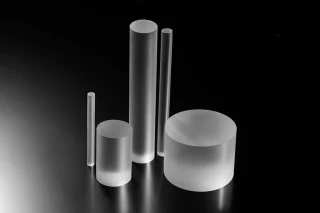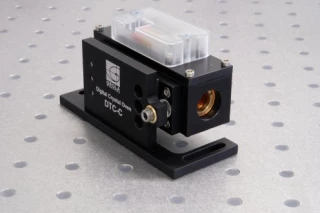Optical Crystals for Research and Industry
Frequently Asked Questions
Optical crystals come in a wide variety of types, each with their own unique properties and characteristics. Some of the most commonly used optical crystals include calcium fluoride (CaF2), magnesium fluoride (MgF2), quartz (SiO2), sapphire (Al2O3), and potassium dihydrogen phosphate (KDP). These crystals are used for a range of applications, such as laser optics, polarizers, and optical filters, among others. The choice of crystal type depends on factors such as the required optical properties, the operating conditions, and the manufacturing process, among others.
Optical crystals are widely used in nonlinear optics to generate harmonic frequencies of laser light, which are essential for a wide range of applications in spectroscopy, imaging, and communication systems. Nonlinear optical phenomena occur when the response of a crystal to an applied electric field is nonlinear, causing the crystal to produce a frequency that is a multiple of the frequency of the incident light. This process, known as second harmonic generation (SHG), is widely used in laser systems to generate light at a frequency that is difficult or impossible to generate directly. Additionally, optical crystals are used in a range of other nonlinear optical applications, such as optical parametric oscillation (OPO), optical parametric amplification (OPA), and sum frequency generation (SFG). These applications are important in areas such as ultrafast laser technology, quantum optics, and nonlinear microscopy.
Choosing the right electro-optic (EO) crystal depends on several factors such as the required electro-optic coefficients, wavelength range, damage threshold, and temperature stability. Considerations also include the orientation of the crystal, its birefringence, and the type of modulation needed. It's important to consult with a knowledgeable supplier who can help you select the appropriate EO crystal for your specific application requirements.
An isotropic crystal has the same optical properties in all directions, while an anisotropic crystal has different optical properties depending on the direction of light propagation. Anisotropic crystals are particularly useful for polarization control and optical switching applications.
Proper handling and cleaning techniques are essential for maintaining the quality of optical crystals. When handling crystals, it's important to wear gloves and use clean tools to avoid contamination from oils and other residues. Cleaning can be done with a gentle solvent or a mixture of deionized water and mild detergent. Ultrasonic cleaning can also be used, but care should be taken to ensure that the crystals are not damaged by the process. Regular inspections using a microscope or other measuring tools can help detect any defects or damage to the crystal surface, which can then be addressed promptly to prevent further deterioration of the crystal's performance. For hydroscopic crystals, it is important to store them in a dry environment to prevent moisture absorption, which can degrade their optical properties. For hydrophobic crystals, care should be taken to prevent contamination by oils or other hydrophobic substances, which can also degrade their optical performance.
Yes, some optical crystals can be used in high-temperature applications. For example, sapphire is a popular choice for high-temperature applications due to its high melting point and thermal conductivity. However, it is important to choose the right crystal for the specific application as not all crystals can withstand high temperatures. Factors such as the crystal's thermal conductivity, thermal expansion coefficient, and chemical stability should be taken into consideration.
The lifespan of an optical crystal can vary depending on various factors such as the type of crystal, its quality, and the conditions under which it is used. Generally, well-maintained crystals can last for many years or even decades. It is essential to store the crystals properly and protect them from physical damage, temperature fluctuations, and moisture to ensure their longevity. Additionally, regular cleaning and maintenance can help prolong the lifespan of optical crystals.
Proper storage and handling of optical crystals is crucial for maintaining their quality and prolonging their lifespan. Crystals should be stored in a dry and clean environment, away from direct sunlight and heat sources. They should also be protected from physical damage and contact with corrosive materials. When handling optical crystals, it is recommended to wear gloves to avoid contamination from oils and sweat on the skin. It is important to use only clean and soft materials, such as lint-free wipes and brushes, to clean the surfaces of the crystals. It is also important to avoid touching the optical surfaces with any cleaning materials, as this can cause scratches or other damage.
The performance of crystal optics can be affected by a variety of factors, including crystal quality, surface quality, temperature, and wavelength. Crystal quality is particularly important, as defects or impurities in the crystal lattice can affect its optical properties.
Crystals are typically manufactured through a process called crystal growth, where a small seed crystal is placed in a solution or melt and slowly grown into a larger crystal. The resulting crystal is then cut and polished to the desired shape and size.
A nonlinear crystal exhibits nonlinear optical properties, meaning that the output light is a function of both the input light and the crystal's properties. Linear crystals, on the other hand, exhibit linear optical properties, meaning that the output light is proportional to the input light.
Crystals are typically tested for quality using techniques such as X-ray diffraction, optical microscopy, and interferometry. These techniques can reveal information about crystal structure, surface quality, and optical performance.
Discover a wide selection of high-quality optical crystals from top suppliers worldwide on FindLight. Our collection includes nonlinear, laser, and electro-optic crystals for research and industrial applications. With fast delivery and expert advice, FindLight is your go-to source for optical crystals. Browse our selection and find the perfect solution for your project.

